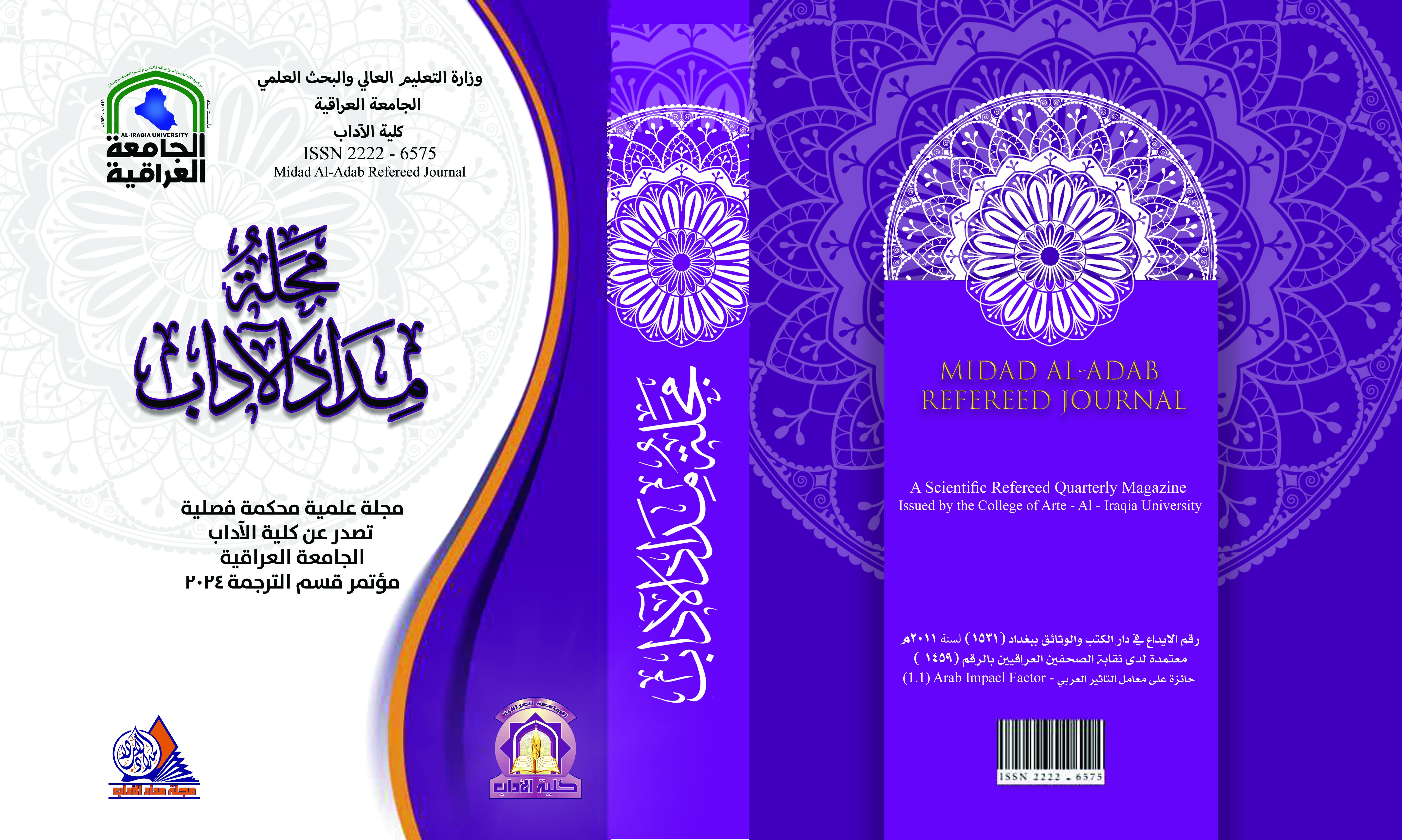الصوفية في روايتي "مدينة البوابات الأربعة" لدوريس ليسنج و"قواعد العشق الأربعون" لإليف شفاق
الصوفية في روايتي "مدينة البوابات الأربعة" لدوريس ليسنج و"قواعد العشق الأربعون" لإليف شفاق
DOI:
https://doi.org/10.58564/ma.v14iخاص%20بمؤتمر%20قسم%20الترجمة%202024.1400الكلمات المفتاحية:
الكلمات المفتاحية: الصوفية، إليف شفاق، دوريس ليسينج، مدينة البوابات الأربعة، قواعد العشق الأربعونالملخص
يتناول هذا البحث موضوع التصوف في رواية إليف شفق "قواعد العشق الأربعون" ورواية دوريس ليسينج "أبواب المدينة الأربعة". تتعمق كلتا المؤلفتين في الجوانب الصوفية للصوفية، وهي ممارسة روحية داخل الإسلام تؤكد على السعي وراء المعرفة الداخلية والاتصال مع الإلهي. ومن خلال تحليل الشخصيات والرمزية والبنية السردية في هذه الروايات، يبحث هذا البحث في كيفية تصوير الصوفية وتأثيرها على الرحلات الروحية للشخصيات. في كتابه "أربعون قاعدة للإخلاص"، يستكشف شفق القوة التحويلية للصوفية من خلال قصة إيلا، وهي امرأة أمريكية تجد العزاء والتوجيه في تعاليم الصوفي الرومي. وتتعمق الرواية في القواعد الأربعين التي يقدمها الرومي لتلاميذه، والتي تكون بمثابة خريطة طريق للنمو الروحي واكتشاف الذات. من خلال رحلة إيلا، تسلط شفق الضوء على الإمكانات التحويلية للصوفية في التغلب على الصراعات الشخصية وإيجاد السلام الداخلي. ومن ناحية أخرى، تتعمق رواية ليسينج "مدينة البوابات الأربعة" في موضوع الصوفية من خلال شخصية أليس، وهي امرأة بريطانية تنطلق في مسعى روحي وسط الاضطرابات السياسية في الشرق الأوسط. بينما تنغمس أليس في تعاليم أساتذة الصوفية، تستكشف ليسينج مفهوم "البوابات الأربعة" كعتبات رمزية تؤدي إلى التنوير الروحي. من خلال لقاءات أليس مع العديد من الممارسين الصوفيين، يقدم ليسينج استكشافًا دقيقًا لدور الصوفية في التعامل مع تعقيدات الحياة وإيجاد الإشباع الروحي. ومن خلال المقارنة بين تصوير الصوفية في هاتين الروايتين، تهدف هذه الورقة إلى تسليط الضوء على وجهات النظر والمقاربات المختلفة للروحانية الصوفية. وهو يدرس الطرق التي يدمج بها شفق وليسنج التعاليم والطقوس والرمزية الصوفية في رواياتهما، وكيف تساهم هذه العناصر في النمو الروحي للشخصيات وفهمها. وفي نهاية المطاف، تسعى هذه الورقة إلى تعميق فهمنا للصوفية كممارسة روحية وأهميتها في الأدب المعاصر.
التنزيلات
منشور
إصدار
القسم
الرخصة

هذا العمل مرخص بموجب Creative Commons Attribution-NonCommercial-NoDerivatives 4.0 International License.








